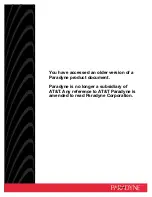
Please check
www.sitecom.com
for up to date drivers & utilities, manuals and support
51
added into the table.
Remove QoS rules from the table If you want to remove some QoS rules from the table,
select the QoS rules you want to remove in the table and
then click "Delete Selected". If you want remove all QoS
rules from the table, just click "Delete All" button. Click
"Reset" will clear your current selections.
Edit a QoS rule
Select the rule you want to edit and click “Edit”, then you
will enter the detail form of the QoS rule. Click “Apply”
after editing the form and the rule will be saved.
Adjust QoS rule priority
You can select the rule and click “Move Up” to make its
priority higher. You also can select the rule and click “Move
Down” to make its priority lower.
Edit QoS Rule:
You can assign packet classification criteria by its local IP range, remote IP range, traffic type,
protocol, local port range and remote port range parameters. The parameters that you leave
as blank will be ignored. The priority of this rule will be applied to packets that match
classification criteria of this rule. You can limit bandwidth consumed by packets that match
this rule or guarantee bandwidth required by packets that match this rule.
Parameters
Description
Rule Name
The name of this rule.
Bandwidth
You can assign the download or upload bandwidth by the unit of Kbps
(1024 bit per second). You can limit the maximum bandwidth
consumed by this rule by selecting “Maximum”. You also can reserve
enough bandwidth for this rule by selecting “Guarantee”.
Local IP Address
Enter the local IP address range of the packets that this rule will apply
to. If you assign 192.168.0.3 – 192.168.0.5, it means 3 IP addresses:
192.168.0.3, 192.168.0.4 and 192.168.0.5
Local Port Range
Enter the local port range of the packets that this rule will apply to.
You can assign a single port number here or assign a range of port
numbers by assigning the first port number and the last port number
of the range. The two numbers are separated by a dash “-“, for
example “101-150” means from port number 100 to port number
150 – the range of 50 port numbers.
Remote IP Address
Enter the remote IP address range of the packets that this rule will
apply to. If you assign 192.168.2.3 – 192.168.2.5, it means 3 IP
addresses: 192.168.2.3, 192.168.2.4 and 192.168.2.5
Remote Port Range
Enter the remote port range of the packets that this rule will apply to.















































